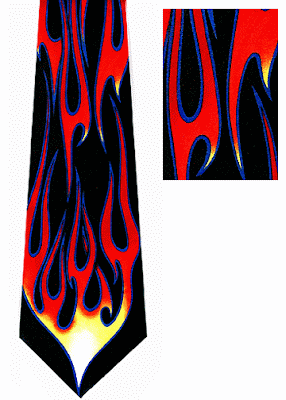 |
| Silk Worms Plus Silk Looms Equals Silk Ties |
“It takes about 125 silkworms to produce one necktie. About one mile of silk is created by each cocoon, so that means the average silk tie requires approximately 660,000 feet of silk!” - further math below.
Approximation by Dr. Sue – Entomologist ( the bug lady of Tustin, CA. Traveling Insect Arthropod Zoo Metamorphosis Ent. )
It is hard to believe that such an ugly thing like the silkworm could produce something as beautiful as silk neckties. However, it has often been said that beauty is in the eye of the beholder as certainly the silkworm’s eye is for each other. Its proper name the mulberry silkworm is given due to the mulberry tree that the silkworm lives in. Throughout the world a half a billion neckties are worn by men every day which keeps these worms quite busy indeed. More than 1.4 billion dollars is spent every year purchasing a hundred million ties. It all starts with lots of silk worms and their cocoons.
 |
| The Silk Roads |
Despite the attempts by the Emperors of China to keep the art of sericulture secrete from the world providing China with a monopoly, the production of silk spread geographically. Korea started producing silk fabrics in 100 BC and in 300 AD India was, as well producing silk fabrics. It was not until 550 AD, that the secrete of manufacturing of silk would reach Europe.
“We are all Adam’s Children, but silk makes the difference,”
-Thomas Fuller , from Gnologia (scholar and preacher, 1608-1661. To think - polyester had not been invented yet.
 |
| Silk Loom |
In the 17th Century, the Croatians are recognized for creating the first neck tie cloth, a distinctive part of a uniform worn by the Croatian mercenary soldiers that fought during the 30 year religious wars in Europe. King Loui the XIV fancied the fashionable Croatian accessory giving his approval to the neck cloth which evolved into modern day neckties. However, it should be noted that China's first emperor, Shih Huang Ti, was buried in 210 B.C. with icons of what surely is neckties. The recent archaeological find in 1972 near the ancient capital city of Xian unearthed the 7500 Terracotta Warriors. Replicas of Shih Huang Ti's famed army. Legions of officers, soldiers, archers and horsemen, all carved in meticulous detail, guard the emperor's sarcophagus. The armor, uniforms, and facial expressions of the soldiers are reproduced in exquisite detail. Each figure is different - except in one respect; all wear neck cloths. Afraid of death, the emperor wanted to slaughter an entire to army to accompany him into the next world. His advisers ultimately persuaded him to take life-size replicas of the soldiers instead. Silk was of great luxury so these guards were adorned with silk ties to signify the honor of these replica soldiers.
In the 13th Century, Italians artisans in Como Italy perfected the screening of silk printing patterns and designs in un-surpassed beauty making Italian silk the most valuable in the world even to this day. With neck wear becoming an accepted fashion accessory throughout Europe and eventually the Americas the silk artists of Como became expert necktie craftsmen. With the age of industrialization in the 20th Century they became highly skillful at the mass production and fabrication of silk neckties known for their superior quality and regarded as the finest silk neck wear in the world.
 |
| Mulberry Trees |
The fashionable design or template of contemporary neckties is a bottleneck shape resulting in broad widening blade from the length of the tie where the knot will be, extending 20 inches to the 90% angled tip. Currently ties measure almost 4 inches in width for the wide blade and about one inch width for the narrow blade at approximately 57 inches in total length. The width of neckties varies from a narrow as 2 inches to more than 4 inches influenced by the width of jacket lapels. The silk fabric is cut on the bias ( 45% ) so the tie will hang correctly not twisting. Neckties consist of three lengths of silk with the longest length at about 30 inches comprising the visible portion of the tie and the length that becomes the knot. This panel of the necktie’s anatomy is where the design serves its aesthetic function including the highlight of the design often carefully positioned creating a pleasing interaction of the knot and length of tie extending below . The other two lengths of the tie, one a smaller length that is about 10 inches long that will run inside the collar and a length about 17 inches that comprises the narrow blade that extends from the knot hidden behind the wide blade. The envelope of silk is fastened in the back using a “slip stitch” that runs the length of the tie. That innovation is the creation of American Entrepreneur Josse Langdorf, who patented his method of creating the wrinkle free necktie in 1920 making ironing ties an unnecessary task
 |
| Woven Silk Neckties |
 |
| Versace Printed Silk Tie |
 |
| Portofino Printed Silk Necktie |
The amount of silk that is yielded from the average cocoon is about 5,000 feet. As many as 1,000 cocoons are needed to produce one pound of silk which is about five million feet or almost 950 miles. About 2 ounces of silk is needed to produce a man’s silk tie which means that it takes about 125 silk worms to make only one necktie! The next time you tie your necktie just consider how hard 125 silk worms had to work to create the silk necessary to create it. Your appreciation and the care you give your ties will certainly be much greater, for sure.
 Check out silk ties at Nice Tie Store
Check out silk ties at Nice Tie Store



























 Visit Ties.com to buy quallity neckties
Visit Ties.com to buy quallity neckties